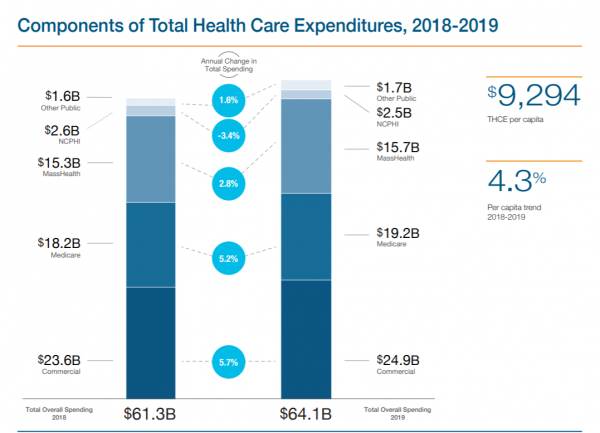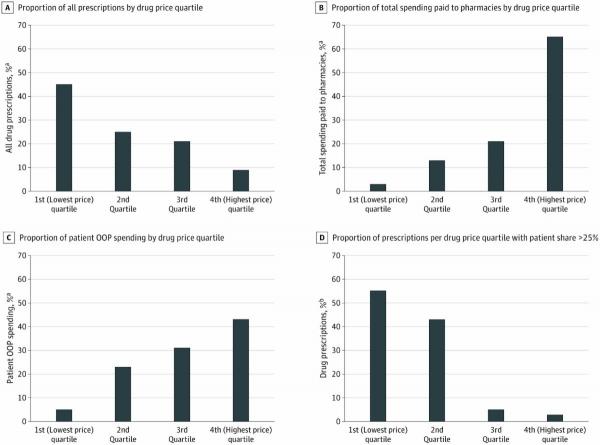DataMatters - May 2021 Edition

In this Issue:
Tolstoy once described spring as “the time of plans and projects.” Nearly 150 years later, this assessment still rings true at CHIA. Since the launch of DataMatters in March, the agency has produced several reports and data assets that provide the factual foundation for health policy development and performance measurement in Massachusetts. CHIA’s Annual Report on the Performance of the Massachusetts Health Care System, the agency’s most comprehensive picture of spending in the state’s health care economy, was released at the Health Policy Commission’s Health Care Cost Growth Benchmark Hearing. CHIA has also reported on the financial impact of COVID-19 on hospitals, profiled inpatient utilization during the pandemic, and completed a series on health care affordability issues—all of which and more we detail below.
News You Can Use
CHIA’s Annual Report calculates Massachusetts’ Total Health Care Expenditures each year, based on summary data reported by commercial and public payers. In 2019, Massachusetts THCE was $64.1 billion, or about $9,300 per capita. This represented a 4.3 percent increase over the prior year, exceeding the health care cost growth benchmark, which was set at 3.1 percent by the Health Policy Commission. However, the Commonwealth’s per capita spending grew more slowly than U.S. health care spending, which rose 4.6 percent to reach $11,582 per capita in 2019 (as calculated by the Centers for Medicare and Medicaid Services).
Other notable findings from this year’s Annual Report are:
- For the first time in several years, hospital outpatient spending was the largest component of total commercial expenditures in 2019, followed by spending on physician services.
- Following several years of rapid growth, premiums for fully-insured plans increased 2.2% between 2018 and 2019, much slower than in the prior year (+5.7%).
- Growth in average member cost-sharing also decelerated in 2019, rising 2.8% to $53 PMPM compared to 6.3% growth in 2018. However, there was substantial variation by market sector, with members in the merged market continuing to experience annual cost-sharing increases above 7% and paying more out of pocket, on average, than members enrolled through large employer plans.
Data User Profile
The above series of bar graphs from Dr. Sinaiko’s and Ms. Aaron’s recent JAMA Network publication, featuring CHIA APCD data, are the “picture is worth 1,000 words” version of their research, which found that patients spend more out of pocket on mid-priced drugs than on the highest-priced drugs.
MA: The file was easy to download and use. It was pretty easily uploaded into [R statistical software]. Once the data was loaded it was ready to use – already aggregated at the year and drug level, with therapeutic class factored in.
Publications
CHIA published a preliminary FY2020 annual report on the financial performance of the Commonwealth’s acute care hospitals, associated health systems, and affiliated physician organizations this spring. This report provided information on profitability, liquidity, and solvency for these entities with a fiscal year end date of June 30 or September 30 (data for entities with fiscal year end dates of December 2020 was not due until after the analysis took place). The report incorporated the financial impact of COVID-19 on hospitals during fiscal year 2020. Additionally, the first FY2021 quarterly report on data through December 31, 2020 was released in May. For most entities included in this report, the data reflects first quarter results. For more information on CHIA’s acute hospital and health system financial performance reports and other hospital-related analysis, visit https://www.chiamass.gov/hospital-financial-performance/.
CHIA has released the last two installments of its six-part "Inside Look" series covering health care affordability issues in Massachusetts: The Burden of Medical Debt is a Struggle for Some and Unmet Health Care Needs Due to Cost are Still Common among the Insured. Previous installments were released earlier in the spring. The six-part series provides a detailed analysis of health care affordability issues in Massachusetts, despite a high rate of insurance coverage. Findings are derived from CHIA’s 2019 Massachusetts Health Insurance Survey.
The Monthly Enrollment Monitoring series, which was added to CHIA’s publication mix last year to offer more timely insight into the impact of COVID-19 on health insurance coverage in Massachusetts, has been released with data through February 2021. The report provides a summary of insurance enrollment by market sector (commercial, Medicare, Medicaid).
CHIA released quarterly updates on inpatient data to its new Reports on Acute Hospital Case Mix Databse series in order to provide timely trend information on inpatient utilization measures during the period leading up to, and including, the outbreak of COVID-19. The updates rely on interim data and will be revised as more complete information becomes available. They are being produced as a supplement to CHIA’s December 2020 Massachusetts Acute Care Hospital Inpatient Discharge Data (FFY 2016-2019) report.
CHIA’s Annual Report on the Performance of the Massachusetts Health Care System was released on March 25 at the Health Policy Commission’s Annual Benchmark Modification Hearing. The report examines trends in cost and quality indicators in the Commonwealth’s health care sector, including a preliminary calculation of Total Health Care Expenditures (THCE) for 2019 and a final calculation for 2018. Note: The Annual Report is typically released in October; the current publication was delayed as CHIA elected to extend data collection deadlines due to the COVID-19 pandemic.
CHIA’s Hospital Profiles for FY2019, along with the Health System Profiles feature, were released on March 19. Hospital and Health System Profiles provide descriptive and comparative information on hospitals based on hospital characteristics, services, payer mix, utilization trends, cost trends, financial performance, and quality over a five-year period. They have been produced since 2012 and include data going back to 2008. The latest edition includes interactive data and profiles which are also available as pdfs.
National Health Care Statistics (NHCS), which CHIA has published since 2016, was released this week with updates including public sector and U.S. Census enrollment data. NHCS highlights U.S. and Massachusetts frequently-requested federal health care data points that are similar or related to CHIA’s own reported data points. It includes measures of health insurance enrollment, access, costs, and spending that are reported for both Massachusetts and the nation by national, non-CHIA sources.
Upcoming Events and Resources
June 22
Through July 23, 2021
CENTER FOR HEALTH INFORMATION AND ANALYSIS
www.chiamass.gov


